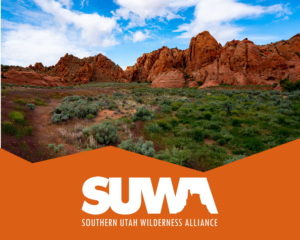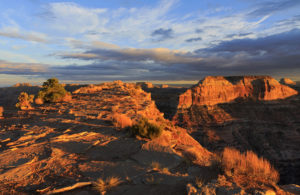MEDIA ADVISORY FOR FRIDAY, OCTOBER 8 at 11:30 AM MT FOR IMMEDIATE RELEASE Media Contact: Steve Bloch, Legal Director, 801-859-1552, steve@suwa.org Event […]
Read More

 Southern Utah Wilderness Alliance
Southern Utah Wilderness Alliance

MEDIA ADVISORY FOR FRIDAY, OCTOBER 8 at 11:30 AM MT FOR IMMEDIATE RELEASE Media Contact: Steve Bloch, Legal Director, 801-859-1552, steve@suwa.org Event […]
Read More
FOR IMMEDIATE RELEASE Contact: Steve Bloch, Legal Director, (801) 428-3981, steve@suwa.org Moab, UT (October 6, 2021) – In response to the Council on Environmental Quality’s draft proposal released this morning […]
Read More
FOR IMMEDIATE RELEASE Contact: Neal Clark, Wildlands Director, 435-259-7090, neal@suwa.org Judi Brawer, Wildlands Attorney, 435-355-0716, judi@suwa.org Moab, UT (September 21, 2021) – More than a dozen conservation organizations based in […]
Read More
Bending over backwards to help company, agency sets ball in motion to allow drilling within ½ mile of national monument; within greater sage-grouse priority habitat and wilderness-caliber lands FOR IMMEDIATE […]
Read More
FOR IMMEDIATE RELEASE Contact: Jen Ujifusa, Legislative Director, jen@suwa.org Washington, DC (May 11, 2021) – Yesterday, Senator Dick Durbin (D-IL) reintroduced S. 1535, America’s Red Rock Wilderness Act, the seminal […]
Read More